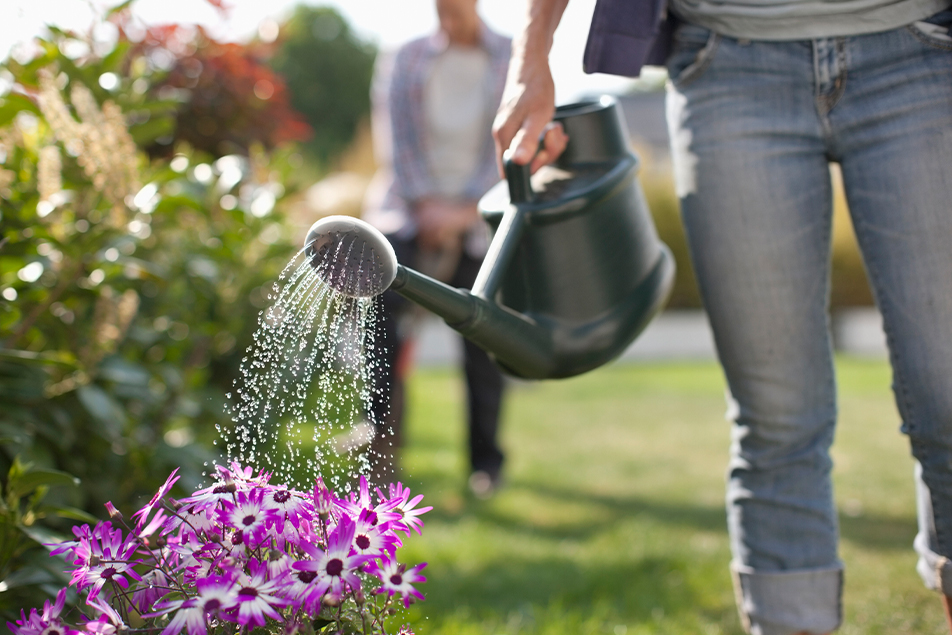
It may seem simple but knowing when and how much to water your flowers, gardens and shrubs can be complex and take some practice. For this reason, we asked Camille Schuelke, greenhouse farmer at the Parkview Community Greenhouse, to share her best tips and tricks for keeping your plants and garden hydrated this summer.
Why is it important for plants and gardens to stay hydrated?
Watering plants helps keep them hydrated while also moving much-needed nutrients throughout the plant, similar to how blood transports nutrients within the human body.
How often should someone water their plants or garden?
When it is extremely hot out, it’s best to water your plants both in the morning and again in the evening if needed.
How much water should someone use?
The amount of water plant life needs will vary depending on the type of plant, its stage of growth and the soil. A general rule of thumb is approximately 32 ounces or 1 quart of water daily for a full-size plant. Plants that produce large-size fruits, such as melons and tomatoes, may need more, about 3 quarts per day.
Is there a specific type of water someone should use when watering?
Watering your plants or garden with whatever type of water you have access to is the first option. However, keep in mind that city water contains fluorides and well water contains high iron levels, so if you can catch rainwater, that would be the best alternative, but purchasing spring water is a great option, too.
Does the temperature of the water matter?
Yes! The air and water temperature are similar in the morning, so the plants are less likely to experience shock when watered. Think of it this way. When you are warm and snuggled in your bed, then someone rips the blankets off; it's a bit jarring. Plants experience the same jolt in the same way when watered if the weather is hot and the water is cold.
Also, if you choose to water your plants and garden in the evening, be sure to bleed your hose first. This prevents any water sitting in the hose throughout the day from scorching or burning your plants and roots. It’s also important to water at the plant base, so the difference in water and air temperature is less likely to shock the plant.
What is the best time of day to water your plants or garden?
The best time to water your plants is in the morning. This provides the plants with hydration to help them make it through the day and prevent fungal growth or diseases because the plants have time to absorb the water, and the leaves have time to dry before the evening when they rest.
What is the best equipment to use when watering plants?
A watering canister is excellent for containers and small gardens, especially one with a sprinkler head versus a spout, because it allows for more even watering. For a hose attachment, a watering wand with a sprinkler head is also a great option. These are typically about 2 feet long, making it easy to water at the base of a plant versus watering the whole plant. You can find them at any garden store or center.
What are some steps people can take to keep their plant life watered when on vacation?
You can fill the tray below the pot for container plants so the plant can absorb water as needed. For gardens, collect grass clippings and spread thickly around your plants, then water thoroughly before you leave. This will provide them with one last water before you leave, and the grass clippings will help retain moisture. Once you return from vacation, remove the grass clippings, so fungus doesn’t grow.
Final thoughts
Finally, if you are unsure, a few telltale signs if your plants need watering can include dry soil, drooping, falling over or leaves dropping. It’s also important to remember that dirt can get dry on the top layer but still wet at the roots. To check this, dig a small spot about 2-3 inches deep close to the plant without disturbing the roots. Then, place the soil in your hand and squeeze. If it clumps together, it is wet, and you do not need to water. If it crumbles away and does not clump, then you need to water it.



